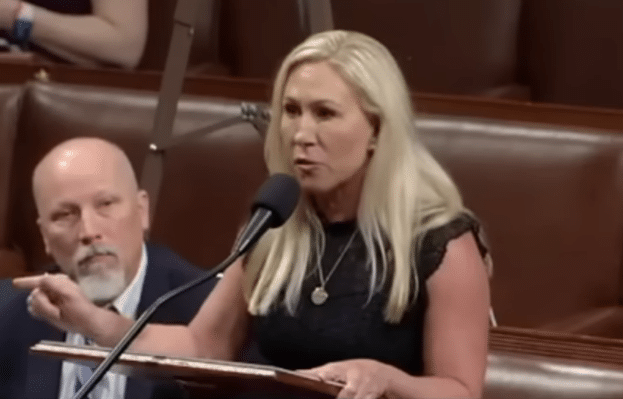
U.S. Rep. Majorie Taylor Greene (R-Ga.) has filed a resolution that would vacate House Speaker Mike Johnson (R-La.) and set off another round of House leadership elections after Congress finished up two omnibus spending bills for Fiscal Year 2024, both of which easily passed the House and Senate with bipartisan, veto-proof supermajorities.
Which is what usually happens in Congress, regardless of which party is in power in either chamber.
In fact, since 1977, Congress has completed all of its appropriations bills — now 12 — only four times prior to Oct. 1: in 1977, 1989, 1995 and 1997. The last time no continuing resolution was used by Congress was in 1997. Otherwise, Congress typically does not get the appropriations process done, about 91.3 percent of the time, instead resorting to stopgap spending bills in lieu of a massive omnibus or year-long continuing resolution, the former of which has now passed.
The gridlock is by design, with the Constitution providing for a bicameral legislature that often is composed of opposing parties who must find agreement with the President, who also might be of a different party, for any bill including appropriations to become law. Situations of there being mixed party rule occurred most of the time since 1977, 66 percent of the time, whereas only 33 percent of the time was there one-party control of the House, Senate and White House: 1977 through 1980, 1993 through 1994, 2003 through 2006, 2009 through 2010, 2017 through 2018 and 2021 through 2022.
Ironically, three out of four times that Congress got all of its appropriations bills done prior to Oct. 1 came with mixed party situations, where one party controlled the White House and the other controlled the House and Senate. In 1989, Republican George H.W. Bush came to agreement on funding bills with a Democratic controlled Congress, and in 1995 and 1997 Democrat Bill Clinton came to an agreement on spending bills with a Republican controlled Congress. In 1977, it was done with Democratic one-party rule, but that appears to be the exception.
Otherwise, the government has been funded for at least part of the year via continuing resolutions in 42 out of 46 years since 1977. These usually result in omnibus spending bills — with 29 omnibus spending bills adopted since 1986 through the most recent period, now 30 counting the two that just passed for this fiscal year, and 15 full-year continuing resolutions since 1977 — highlighting Congress’ usual practice of combining all of the spending into one or two bills and passing them that way, rather than the supposed “traditional” 12 appropriations bills that almost always never get all done.
Those were the outcomes in spite of 22 partial government shutdowns since 1976 — with the longest shutdown occurring for 35 days in 2018 and early 2019. The second longest shutdown was in 1995 and 1996 of 21 days.
Therefore, the gridlock and disagreement surrounding funding bills — and the occasional government shutdown — is not the exception, but rather the rule to expect in Washington, D.C., regardless of which parties are in power.
Naturally, given the history, the outcome came in spite prior turmoil in 2023 to remove former House Speaker Kevin McCarthy (R-Calif.), who ultimately ending up resigning from Congress.
Following other departures, Republicans now just have a slim 218 to 213 majority, with special elections for four current vacancies pending on April 30 for New York’s 26th Congressional District, May 21 for California’s 20th Congressional District, June 11 for Ohio’s 6th Congressional District and June 25 for Colorado’s 4th Congressional District.
That makes a potential motion to vacate the chair and then election for Speaker right now a matter of just a three-seat swing, if for example three Republicans decided to vote with Democrats for a coalition government. It is worth noting that Greene has not brought her resolution up on a privileged basis, meaning a potential vote might not be for a couple of weeks.
But in terms of the math of passing spending bill — veto-proof majorities remain to pass big spending bills — it might not make much of a difference.
Robert Romano is the Vice President of Public Policy at Americans for Limited Government Foundation.





